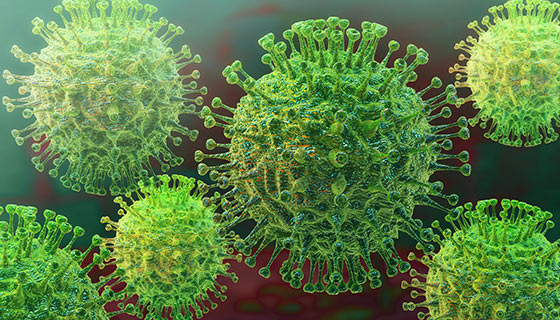
Greetings readers,
I try to theme these posts. This one is themed with the name of one of the categories associated with almost every one of these posts.
We live in a HATE NATION.
I promise to make better HODGE PODGES soon. Though it may take a couple of weeks to get in the swing.


https://www.motherjones.com/mojo-wire/2021/03/heavily-armed-man-arrested-outside-house-of-vp-kamala-harris
Heavily Armed Man Arrested Outside Residence of VP Kamala Harris

A man in possession of a rifle and ammunition was arrested outside the Naval Observatory, which contains Vice President Kamala Harris’ residence, Wednesday afternoon. Harris and her husband, Doug Emhoff, do not currently live at the Naval Observatory because it is undergoing renovations.
According to police bulletins, the Texas man, a former Army drone operator who was apparently experiencing paranoid delusions, said he was going to DC “to take care of his problem.” He was charged with carrying a dangerous weapon, carrying a rifle or shotgun outside of a business, possession of unregistered ammunition, and possession of a large capacity ammunition feeding device.
The incident was particularly worrisome given the recent violence at the Capitol, and the base personal attacks former President Trump and his minions leveled against Harris during the campaign and beyond. Among other things, Trump has referred to Harris as mean, “nasty,” “horrible,” “disrespectful,” “shameless,” and a “disaster,” and said that electing her would be “an insult to our country.”
While the suspect’s political ideologies are not yet clear, one can only imagine how a mentally unhinged fan of the former president might interpret such attacks on the vice president’s character.
Russia Worked to Boost Trump in 2020—With Help From Giuliani, Fox News, and OANN
A US intelligence report also reveals Iranian meddling and Chinese consideration of similar efforts.
Elements in the Russian government, including President Vladimir Putin, oversaw a bid to use outside proxies to feed disinformation to Rudy Giuliani, Fox News, and the right-wing TV network OANN aimed at helping Donald Trump against Joe Biden during the 2020 campaign, a newly declassified US intelligence report reveals.
The report—declassified Monday and released Tuesday by the Office of the Director of National Intelligence—ties a series of previously reported episodes and allegations into a single sprawling effort that saw the Russian government work to influence the outcome of the 2020 election. The Russians, the report states, pushed “influence narratives—including misleading or unsubstantiated allegations against President Biden—to US media organizations, US officials, and prominent US individuals, including some close to former President Trump and his administration.”
The report seems to refer to efforts by Giuliani, Trump’s personal lawyer, and conservative media figures at Fox News and OANN to push allegations that Biden and his son were deeply involved in political corruption in Ukraine, though Giuliani and other Americans are not specifically named. Russia’s goal was to get Trump reelected because he was viewed as a preferable alternative to Biden, the report claims. The Kremlin also hoped to undermine Americans’ confidence in the electoral process and sow political divisions, it says. In some ways, the operation built upon the well-documented efforts the Russian government used to interfere in the 2016 election. But this time, the report claims, the methods were far less technical and relied more on getting information into the national conversation and letting it go from there.
“A key element of Moscow’s strategy this election cycle was its use of people linked to Russian intelligence to launder influence narratives…through US media organizations, US officials, and prominent US individuals, some of whom were close to former President Trump and his administration,” the report notes. That information—specifically allegations of Biden family corruption in Ukraine going back as far as 2014—was fed through Andriy Derkach, a Ukrainian legislator who has ties with Russian officials and the Russian intelligence services.
Giuliani did not respond to a request for comment.
Another key player in the efforts was Konstantin Kilimnik, an associate of former Trump campaign chairman Paul Manafort and a likely Russian intelligence officer, according to a report issued last fall by the Republican-led Senate Intelligence Committee. That report concluded that Manafort—who was convicted of financial crimes in 2018 and sentenced to seven-and-a-half years in prison, only to be pardoned by Trump in December 2020—was a “grave counterintelligence threat” due to his “sustained contact” with Kilimnik before, during, and after the Russian election interference campaign of 2016.
In 2020, the new report claims, Kilimnik and others used “prominent US persons and media conduits to launder their narratives” and “met with and provided materials to Trump administration-linked US persons,” among other efforts. They were also behind a “documentary that aired on a US television network in late January 2020,” the report reads. This is an apparent reference an OAN segment titled “The Ukraine Hoax: Impeachment, Biden Cash, and Mass Murder,” which was hosted by Michael Caputo, a right-wing operative who Trump later made the top spokesman for the Health and Human Services Department.
In a phone interview, Caputo said said he had not spoken to Derkach or Kilimnick for the movie and answered “no” when asked if he was aware of any Russian government involvement with it. (Caputo’s co-executive producer on the movie, Sergey Petrushin, is Russian, though Caputo said Petrushin, who he described as his “business partner and friend for 25 years” lives in Miami.)
The Most Radical Republicans Aren’t in Congress. They’re in the Statehouses.
If you think the national GOP has embraced fringe figures, wait until you meet their colleagues in statehouses
Erika Geiss felt a tinge of déjà vu on January 6. She watched in horror and disbelief as thousands of rioters—driven by Trump’s lie that the 2020 election was fraudulent—scaled the outer walls of the US Capitol and violently forced their way inside the building and into the Senate chambers. But the “ire and vitriol” that Geiss says she saw watching live coverage of the Capitol insurrectionists on TV at her home didn’t surprise her. It was all too familiar. “We saw that here,” says Geiss, a state senator in Michigan representing a district just south of Detroit. “And we saw it mounting and escalating throughout April.”
On April 30, 2020, as Geiss and her colleagues convened for a legislative session in the Michigan Statehouse, a demonstration against the state’s stay-at-home orders took a harrowing turn as the protesters forced their way inside the building. Just as the insurrectionists did on January 6, the Michigan rioters broke through barricades and doors and pushed their way past security personnel until they entered the Senate chamber. Though the Michigan event never turned physically violent against lawmakers, it came quite close as protesters hovered and shouted in the galleries, many wearing bulletproof vests and armed with rifles and AR-15-style assault weapons. In hindsight, the riot at the Michigan Statehouse in April seems like a dress rehearsal for what happened eight months later at the US Capitol.
But there’s a key difference in the aftermath of both riots that highlights an alarming divide growing in the Republican Party. Whereas the Congressional Republicans are trying to figure out what the future of their party looks like—weighing how much of Trumpism and its extremist elements they can cling to without totally repelling more moderate voters—a growing number of GOP lawmakers at the state level are doubling down on their radical viewpoints, dangerous conspiracy theories, and association with paramilitary militias and other violent extremist groups. For every Marjorie Taylor Greene (R-Ga.) currently in Congress, there are dozens of more like her at the state level—and with close ties with right-wing extremist groups.
After four years of embracing Trump—and all the ugly, racist rhetoric and violence that came with him—some of the more cravenly opportunistic Republicans are now trying to leave it behind. It can be a clumsy sight to behold: Senate Minority Leader Mitch McConnell (R-Ky.) delivered a scathing condemnation of Trump’s actions leading up to January 6, but still voted to acquit him during impeachment (though seven of his Republican colleagues crossed party lines on that vote, a record number). And 11 Republicans in the House voted to strip Greene of her committee assignments over her history of racist remarks and conspiracy theories. But the national party is still very much beholden to Trump. At the Conservative Political Action Conference two weeks ago, Trump delivered the keynote address, where he gave an authoritarian speech with a warning. “With your help, we will take back the House. We will win the Senate. And then a Republican president will make a triumphant return to the White House,” Trump said. “And I wonder who that will be.”
The scene at the state level makes one thing clear: Trump still dominates. The Wyoming GOP formally censured Rep. Liz Cheney for voting to impeach Trump. (And a number of other state Republican parties followed suit and censured their respective congressional leaders for not pushing election-related conspiracy theories and turning their back on the former president.) Meanwhile, radical Republican state lawmakers who were once considered fringe members of their own party have moved to the front and center, thanks to the Trump playbook. “Many of these folks have been in our legislatures for a while,” says Carolyn Fiddler, the communications director for Daily Kos. “And they always leaned in that direction. But Trump normalized it. And he demonstrated that you can use it as a way to gain and exercise power.”
In the immediate aftermath of the April riot in Michigan, the state’s top Republican, Senate Majority Leader Mike Shirkey, initially condemned the local militia that organized the protest, calling them “a bunch of jackasses.” The outrage didn’t last long.

https://slate.com/culture/2021/03/last-week-tonight-john-oliver-tucker-carlson.html
John Oliver Just Starts Whaling on Tucker Carlson
MARCH 15, 20214:30 AM
This week’s Last Week Tonight was a break from John Oliver’s recent coverage of systemic disasters the United States has no hope and no intention of fixing, like our unemployment insurance system or our police raids or our meatpacking industry. Instead of broad, difficult problems in which we all have some degree of complicity, Oliver gave us a classic “Oh, this asshole again” segment about Tucker Carlson, who may be the most malignant television personality since Lonesome Rhodes. Last Week Tonight usually evokes a sense of hopelessness in the face of the nigh-unsolvable problems humanity will be facing over the next century or so. This week, however, in a return to the carefree days when Oliver was paying giant squirrels to insult coal barons, the host offered audiences the pure, innocent pleasure of watching him insult someone who richly deserves to be insulted. Enjoy!
It wouldn’t be Last Week Tonight if Oliver didn’t explore the historical and systemic forces that enable people like Carlson to command an audience, so let’s face it: As long as there’s a market for thinly-disguised white supremacist content on national television, there will always be a Tucker Carlson, even if his name is not “Tucker Carlson.” But this specific Tucker Carlson is terrible! And, unlike, say, a world with no police raids, it’s pretty easy to imagine a world in which Tucker Carlson is no longer pumping racist poison into impressionable white people’s brains on a nightly basis. Let’s see if they’ll let us live there.
I Got Shot, Part One
Posted on March 16, 2021 Posted by John Scalzi

Hey, would you look at this, this is me getting my first shot of the Pfizer COVID vaccine today. You should know that the shot itself was painless — literally, if I hadn’t been taking a selfie of the moment I was stabbed I’m not sure I would have been convinced I had gotten the shot — and so far there are no real side effects for me. I understand that with the first shot, it’s the next day you feel it, and that it’s the second shot where you really feel the side effects, if in fact you feel it at all. I’ll let you know in both cases, but in both cases, side effects are better than the actual effect of battling COVID.
For those wondering, I got the shot at Wilson Health in Sidney, which is in the county north of me, mostly because they had appointments available when everything closer to me was all booked up. The process was efficiently and competently run and Krissy and I were signed in, shot up, and sent out in just about an hour. The only real complaint I had was not about Wilson Health, but that nearly every dude waiting to get a shot had his nose sticking out of his mask. On one hand, they’re getting a vaccine, so it could be worse, but on the other hand, for fuck’s sake, dudes, put your nose in your mask.
I live in a region where there is “vaccine hesitancy,” because this is a Republican-dominated area, and the Republicans spent the last year trying to pretend COVID wasn’t that big of a deal, that it would magically go away, you don’t need masks, so on and so forth. I was heartened to see so many people getting vaccinated today, but there need to be more, and for the people who have “hesitancy” about it, I would remind them that the COVID virus genuinely does not care what your politics are or what your favorite talk show host has to say about vaccines, or whatever ridiculous thing you read on Facebook about microchips in the shot or whatever. It just wants to infect you, and then possibly kill you. Get the damn shot. It’s smart for you, and it helps protect literally everybody else you might come across. And as someone in line actually said today to someone else, “Better to have it and not need it, than to need it and not have it.” That’s one hundred percent correct.
In any event: One shot down, one shot to go. And I now have a concrete timeline for a return to something resembling normalcy for me and my family. That’s worth a tiny, painless stab in the arm for sure.
— JS
PANDEMIC
THE WEEKLY PANDEMIC REPORT
If you prefer your data in a visual format, here's the current map from COVID Exit Strategy, using data from the CDC and the COVID Tracking Project.
I want to add this link to the weekly report. It's important to remember:
A Sense of Doubt blog post #1983 - Is Coronavirus more contagious and more deadly than the flu? YES.

ALSO... I am seeing a big discrepancy between the Johns Hopkins data in death totals and WORLDOMETER data, which aggregates data from many more sources. Could this be the slow down due to the change in how the CDC obtains the data, having it filter first through Health and Human Services department.
 United States
United States

Coronavirus Cases:
Deaths:
Recovered:

 |
 |
Mars May Hide Oceans of Water Beneath Its Crust, Study Finds (space.com)
In the new study, the scientists found chemical reactions may have led between 30% to 99% of the water that Mars initially had to get locked into minerals and buried in the planet's crust. Any remaining water was then lost to space, explaining the hydrogen-to-deuterium ratios seen on Mars. All in all, the researchers suggested Mars lost 40% to 95% of its water during its Noachian period about 4.1 billion to 3.7 billion years ago. Their model suggested the amount of water on the Red Planet reached its current levels by about 3 billion years ago.
Lightning May Have Created an Ingredient Needed For Life To Evolve (npr.org)
Posted by BeauHD from the land-before-time dept.
An anonymous reader quotes a report from NPR:In 2016, a family in Illinois thought that a meteorite had hit their backyard. They called up the geology department at nearby Wheaton College to say that whatever struck their property had started a small fire and had left a weird rock embedded in the scorched dirt. "Meteorites, contrary to popular belief, are cold when they hit the ground," says Benjamin Hess, who was an undergraduate at the college but is now a graduate student at Yale University. "My professor readily figured out that that was probably a lightning strike."
When lightning strikes sand, soil or stone, it immediately melts the materials into a glassy clump known as a fulgurite, or lightning rock. When geologists excavated the fulgurite in Illinois, they found something unexpected inside -- an important ingredient for life that had long been thought to be delivered to early Earth by meteorites. A report on the find, in the journal Nature Communications, suggests that this could have been a way for lightning to have played a key role in the emergence of life.
When the researchers dug out the fulgurite in Illinois, they first saw glassy bits on its surface. Below that was a thick, tree-root-like structure extending down about a foot and a half. Hess and two colleagues at the University of Leeds analyzed the minerals inside and found one called schreibersite. This reactive mineral contains phosphorus, an essential element for life. Phosphorus "really plays a key role in a lot of the basic cell structures," says Hess. For example, it makes up the backbone of DNA. Phosphorus was abundant in early Earth, but geologists know that it was mostly inaccessible because it was trapped inside nonreactive minerals that don't dissolve easily in water.One explanation for where the phosphorus came from is meteorites, which can contain reactive minerals like schreibersite. But, according to the researchers, lightning offers an alternative source as it doesn't destroy an entire 100-kilometer area when it strikes and there could have been 1 billion to 5 billion lightning flashes every year when life firm emerged, about 3.5 billion years ago.
Over the last year, Christ and an international team of scientists -- led by Paul Bierman at UVM, Joerg Schaefer at Columbia University and Dorthe Dahl-Jensen at the University of Copenhagen -- have studied these one-of-a-kind fossil plants and sediment from the bottom of Greenland. Their results show that most, or all, of Greenland must have been ice-free within the last million years, perhaps even the last few hundred-thousand years. "Ice sheets typically pulverize and destroy everything in their path," says Christ, "but what we discovered was delicate plant structures -- perfectly preserved. They're fossils, but they look like they died yesterday. It's a time capsule of what used to live on Greenland that we wouldn't be able to find anywhere else."The findings appear in the journal Proceedings of the National Academy of Science.
Some Dead Stars May Harbor Enough Uranium To Set Off a Thermonuclear Bomb (sciencemag.org)
The findings could yield insights into the destruction habits of white dwarfs, which are responsible for creating heavy elements like iron and nickel. White dwarf supernovae light up their surroundings with the power of 5 billion Suns, and astronomers have used them as 'standard candles' to measure vast distances across the cosmos. But such blasts are still not entirely understood, and the new study could account for certain, anomalously dim observations of this type of supernovae.The findings appeared on the preprint server arXiv this month and have been accepted for publication in Physical Review Letters.
This discovery suggests that these molecules can form at much lower temperatures than expected, and it may lead scientists to rethink their assumptions about the role of PAH chemistry in the formation of stars and planets, the researchers say. "What makes the detection so important is that not only have we confirmed a hypothesis that has been 30 years in the making, but now we can look at all of the other molecules in this one source and ask how they are reacting to form the PAHs we're seeing, how the PAHs we're seeing may react with other things to possibly form larger molecules, and what implications that may have for our understanding of the role of very large carbon molecules in forming planets and stars," says McGuire, who is a senior author of the new study.The study appears today in the journal Science.
AmiMoJo shares a report from ScienceAlert:The menagerie of bacterial and fungal species living among us is ever growing -- and this is no exception in low-gravity environments, such as the International Space Station (ISS). Researchers from the United States and India working with NASA have now discovered four strains of bacteria living in different places in the ISS -- three of which were, until now, completely unknown to science.
Three of the four strains were isolated back in 2015 and 2016 -- one was found on an overhead panel of the ISS research stations, the second was found in the Cupola, the third was found on the surface of the dining table; the fourth was found in an old HEPA filter returned to Earth in 2011. All four of the strains belong to a family of bacteria found in soil and freshwater; they are involved in nitrogen fixation, plant growth, and can help stop plant pathogens. Basically, good bacteria to have around if you're growing things.The research has been published in Frontiers in Microbiology.
https://science.slashdot.org/story/21/03/17/2247255/scientists-believe-oumuamua-was-chunk-of-extrasolar-pluto-like-planet
Scientists Believe 'Oumuamua Was Chunk of Extrasolar Pluto-Like Planet (phys.org)
The scientists found one ice in particular -- solid nitrogen -- that provided an exact match to all the object's features simultaneously. And since solid nitrogen ice can be seen on the surface of Pluto, it is possible that a comet-like object could be made of the same material. "We knew we had hit on the right idea when we completed the calculation for what albedo (how reflective the body is) would make the motion of 'Oumuamua match the observations," said Jackson, who is a research scientist and an Exploration Fellow at ASU. "That value came out as being the same as we observe on the surface of Pluto or Triton, bodies covered in nitrogen ice."
They then calculated the rate at which chunks of solid nitrogen ice would have been knocked off the surfaces of Pluto and similar bodies early in our solar system's history. And they calculated the probability that chunks of solid nitrogen ice from other solar systems would reach ours. "It was likely knocked off the surface by an impact about half a billion years ago and thrown out of its parent system," Jackson said. "Being made of frozen nitrogen also explains the unusual shape of 'Oumuamua. As the outer layers of nitrogen ice evaporated, the shape of the body would have become progressively more flattened, just like a bar of soap does as the outer layers get rubbed off through use."
+++++++++++++++++++++++++++++++++++++++++++++++++++++++++++++++++++++++
+++++++++++++++++++++++++++++++++++++++++++++++++++++++++++++++++++++++
+++++++++++++++++++++++++++++++++++++++++++++++++++++++++++++++++++++++
- Bloggery committed by chris tower - 2103.20 - 10:10
- Days ago = 2087 days ago
- New note - On 1807.06, I ceased daily transmission of my Hey Mom feature after three years of daily conversations. I plan to continue Hey Mom posts at least twice per week but will continue to post the days since ("Days Ago") count on my blog each day. The blog entry numbering in the title has changed to reflect total Sense of Doubt posts since I began the blog on 0705.04, which include Hey Mom posts, Daily Bowie posts, and Sense of Doubt posts. Hey Mom posts will still be numbered sequentially. New Hey Mom posts will use the same format as all the other Hey Mom posts; all other posts will feature this format seen here.














No comments:
Post a Comment